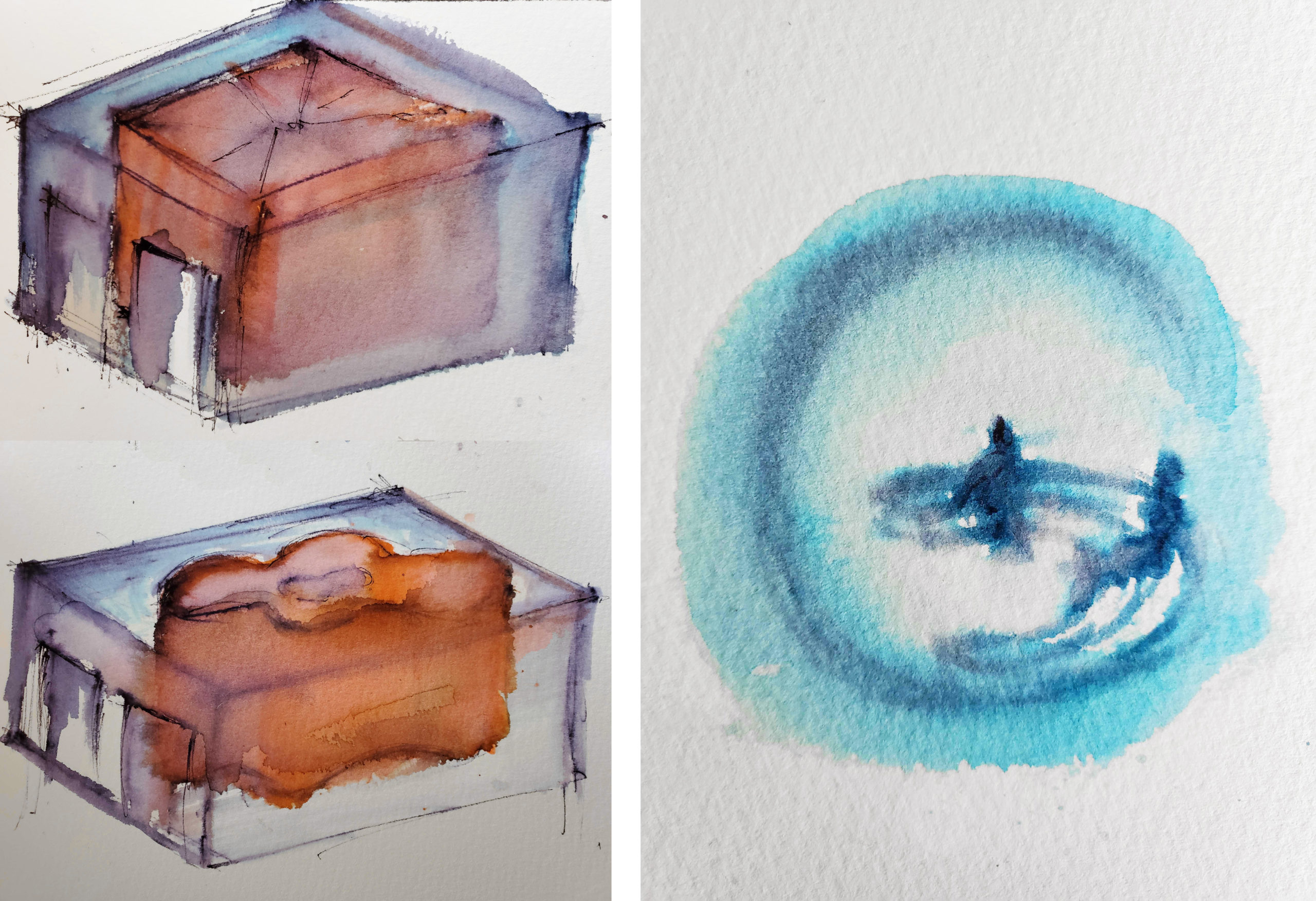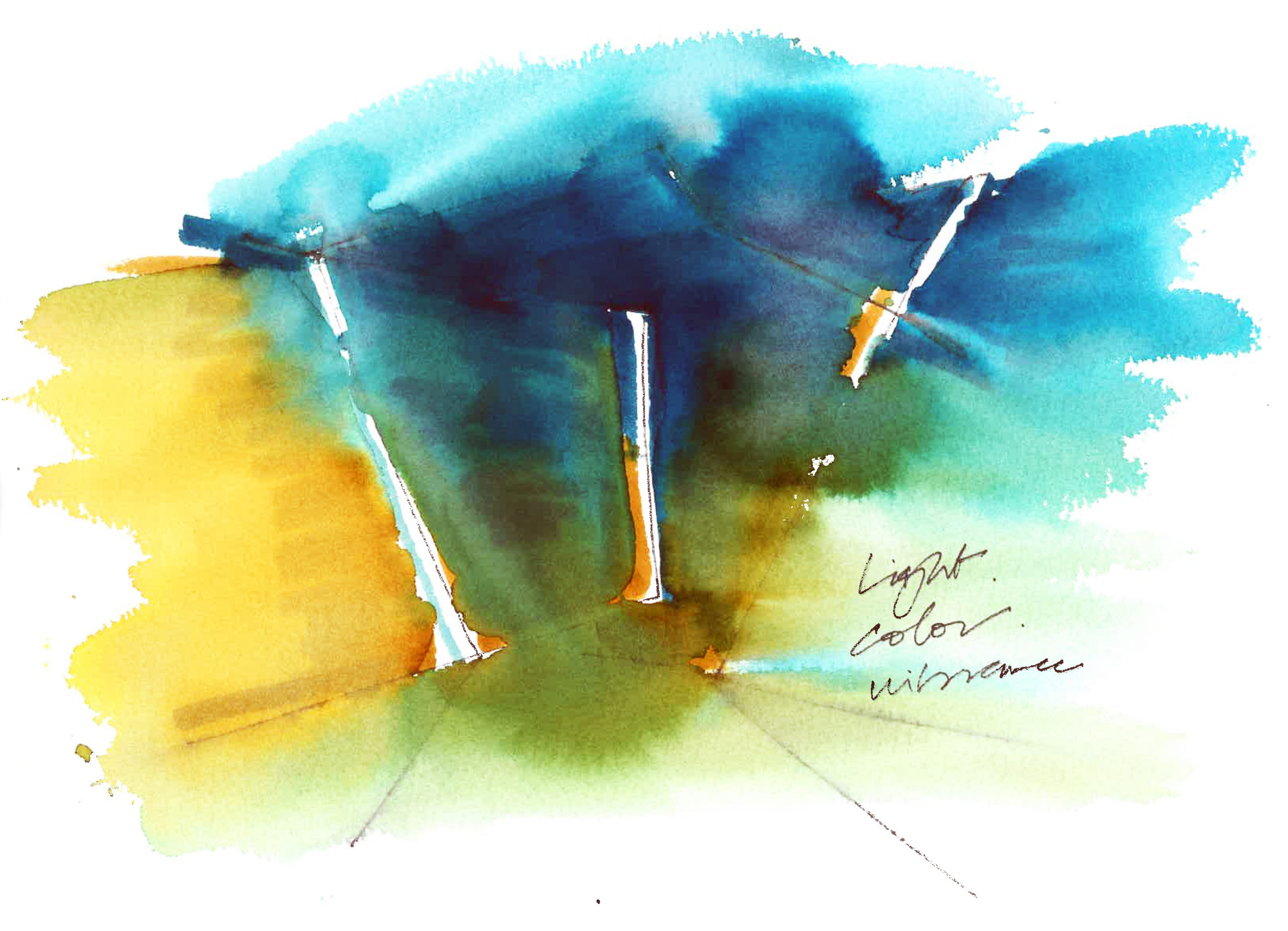“Form follows feeling.”
This is the guiding principle of Reddymade, the New York-based firm founded in 2002 by Suchi Reddy. Accordingly, the firm’s creative brand of architecture is wrapped with rich, emotive properties, and the same can be said of Reddy’s sketches and watercolors. Belying their simplicity, these drawings and paintings exude atmosphere, a quality also present within the stunning winners of this year’s One Drawing Challenge competition.
As an esteemed juror for the competition, Reddy posed the following questions for entrants to consider when creating their drawings: “Does the image convey the idea? Does it lead me to think more about the idea, open the door to a longer conversation? Is it a great invitation to understand a way of thinking?” Ultimately, drawings with the greatest levels of “poetic expression” went on to score highly.
We chatted with Suchi Reddy about the essence of architectural drawing today, and what matters most when putting pencil to paper:
Paul Keskeys: With the proliferation of 3D modeling and photo-realistic renderings, do you think there is still a place for hand drawing in architectural practice? If so, why?
Suchi Reddy: Hand drawing is a foundational skill for an architect; we can add and layer into that with 3d modeling and photo-realistic renderings, but in my view it remains the foundation on which all other skills are built. The immediacy of the distilled communication between the hand and the mind’s eye that it represents is still unparalleled by other techniques.

Space studies 2 and 3; paintings courtesy Suchi Reddy
What qualities or elements do feel it is most vital to communicate in an architectural drawing?
An architectural drawing must, first and foremost, communicate the concept of the proposed work in my view. It can be layered and added to, but what must stand out at first glance is the idea. Scale and proportion are important keys to achieving this. In the book “Drawing From Practice” by J. Michael Welton, is a great guide to how this can manifest in different styles.
Which of your fellow architect’s drawing styles are you particularly drawn to and why?
I am going back a bit here, but Louis Kahn’s drawing style remains a huge inspiration to me, for its reductive, and essential nature. I am honored to have a small sketch of his, where, in about eight lines he describes a place he used to vacation in on a hill. Drawing is akin to poetry when it can communicate a sense and a feeling with such economy of means.
For more contemporary colleagues, I am a fan of Zeuler Lima who besides drawing beautifully has also written many books on Lina Bo Bardi, including one on her drawings which I also love.

Space study 5; painting courtesy Suchi Reddy
What advice would you give architectural students and young architects when it comes to sketching?
I would say sketch like your hair is on fire. My advice to everyone who comes through my studio, and to my students, is to sketch every day. Sketch anything, from windows to door handles, to corners…anything.
Drawing is a very efficient tool for young architects to register and understand scale, proportion, and the details of the built environment. Once you draw all the parts of something, you never forget how to build it. I also firmly believe that our brains scale and proportion much faster and better through drawings than thought.
Thank you to all participants for their hard work in creating these amazing drawings and telling fascinating stories about architecture. If you are interested in entering next year’s One Drawing Challenge, be sure to sign up for updates by clicking the blue button below.
In the meantime, keep on drawing!
Register for the next One Drawing Challenge
Top image: “X” Valentine’s installation by Reddymade, New York NY




